245 Vs 315 Tires
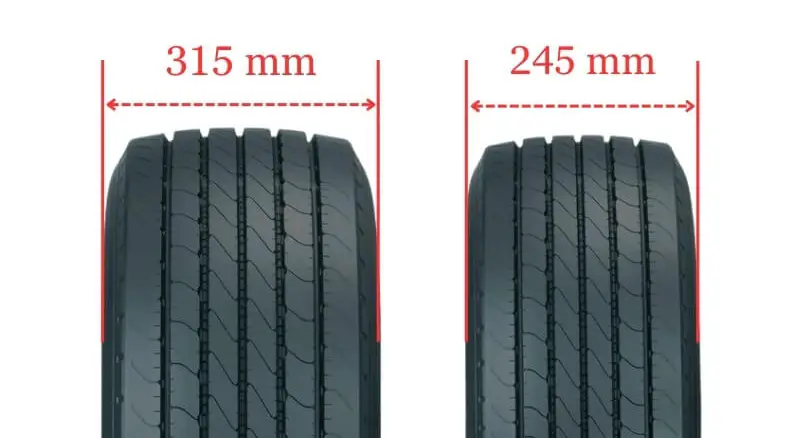
The main difference between a 245 tire and a 315 tire is the tread width, with the 315 having a tread 70mm (or about 2.76 inches) wider than the 245.
This wider tread provides more traction and stability, especially for off-road driving, but comes at the expense of some handling, fuel economy, and noise.
245 Vs 315 Table
This table provides a clear and concise comparison of two tire sizes, making it easy to identify key differences.
| Tire Size 245 | Tire Size 315 |
|---|---|
| More responsive handling | More high-speed stability |
| Lower rolling resistance, better gas mileage | More traction in mud and gravel |
| Smoother ride on pavement | Plusher ride on uneven terrain |
| More even treadwear, longer life | Handles off-road impacts better |
| Cuts through snow more effectively | Aggressive, muscular aesthetic appeal |
| Quieter on smooth roads | Dampens road vibrations better |
| Lower risk of scraping on pavement | Increased ground clearance for off-road |
| Smaller contact patch, faster turn-in | Slightly lower speedometer reading |
Ground Clearance
The larger 315 tires will provide more ground clearance than the 245, which is beneficial for off-roading over rocks or on rough terrain. However, the lower profile 245 may be preferable on paved roads to reduce the risk of scraping or bottoming out.
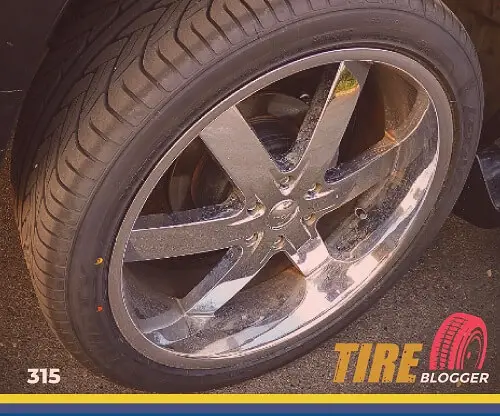
Gas Mileage
With a smaller contact patch and lower rotational mass, the 245 tire confers slightly better fuel efficiency, an important consideration for daily driving. The heavier 315 tire creates more rolling resistance, detrimentally impacting gas mileage.
Ride Comfort
The 315’s increased air volume and taller sidewalls provide a plusher ride quality and better absorption over uneven surfaces. But the 245 offers a smoother, quieter ride on paved surfaces, with less road noise intrusion into the cabin.
Aesthetics
The wider, more aggressive 315 has an aesthetic, almost muscular appeal, while the 245 looks more balanced on cars not intended for off-road use. Larger diameter wheels paired with the 315 can provide an eye-catching look.
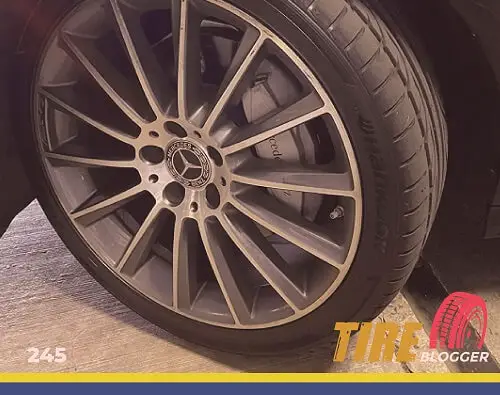
Handling & Stability
The 245’s smaller contact patch enhances responsiveness and handling on pavement but gives up some stability. The 315 sacrifices initial turn-in quickness for improved high-speed stability and traction across gravel or mud.
Noise & Vibration
The 315’s wider tread produces more highway noise, but its voluminous sidewalls dampen vibrations over uneven terrain. The 245 generates less noise on smooth roads yet transmits more road vibration into the chassis.
Durability & Wear
The 245’s smaller footprint distributes the load more evenly across the tire’s surface area, potentially extending life. But the 315’s heavier construction withstands off-road impacts and absorbs more stress at the cost of quicker wear.
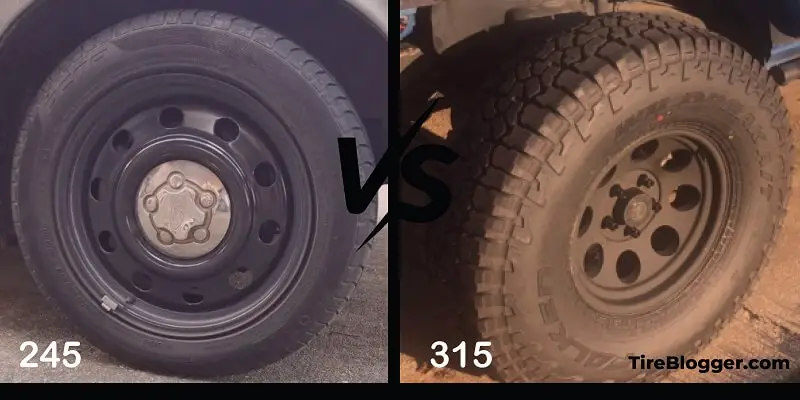
Adverse Conditions
In snow or ice, the 245 can cut through to the pavement more effectively while also providing sufficient snow traction. The wide 315 requires more effort to push through the snow but provides excellent muddy or sandy traction.
Speedometer Reading
Due to its larger diameter, the 315 will register a lower speedometer reading than actual vehicle speed. No recalibration is needed between 245 and 315, but drivers should be aware of this variance.
Difference Between 245 and 315 Tires
The section width is the main difference between tire sizes 245 and 315, with 315 being approximately 70mm wider. This variance affects several performance factors, including traction, handling, and overall vehicle dynamics.
Can I Use 315 Tires Instead of 245?
No, it is not recommended to replace 245 tires with 315 tires. The ideal rim width ranges for these tire sizes do not overlap, which could lead to improper fitment and potential safety issues.
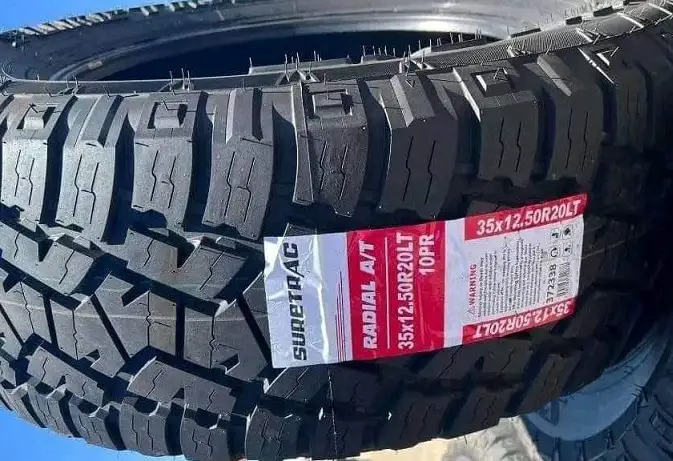
Can I Use 245 Tires Instead of 315?
No, it is not advisable to use 245 tires instead of 315 tires. The ideal rim width ranges for these tire sizes do not overlap, which may result in poor tire performance and potential safety concerns.
Can I Put 315 Tires on 245 Rims?
No, you should not put 315 tires on rims designed for 245 tires. The ideal rim width range for 245 tires (7.5-9.0 inches) does not overlap with the range for 315 tires (10.0-12.0 inches), making it an unsuitable combination.
Can I Put 245 Tires on 315 Rims?
No, you cannot put 245 tires on rims designed for 315 tires. The ideal rim width range for 315 tires (10.0-12.0 inches) does not overlap with the range for 245 tires (7.5-9.0 inches), resulting in improper fitment and potential issues.
Our Observation
When comparing tire sizes 245 and 315, I’m struck by the trade-offs involved. While the huskier 315 undoubtedly provides more traction off-road, I question whether that benefit outweighs the on-road downsides for most drivers.
The 245 offers the best blend of ride comfort, handling, and fuel efficiency that will satisfy most daily driving needs. Visually, the 315 fits large SUVs or trucks but would look out of place on many sedans.
For my purposes, I find the 245 hits the sweet spot, providing ample capability without significant compromises. Still, 315 fans relish the rugged looks and off-road improvements, which I can certainly appreciate even if it’s not my ideal choice.

Meet Caitlin McCormack, a Tire Size Expert and Blogger Passionate About Everything Related to Tires. With Years of Experience in the Tire Industry, Caitlin Has Become an Expert in Tire Sizes and Their Impact on Vehicle Performance.
